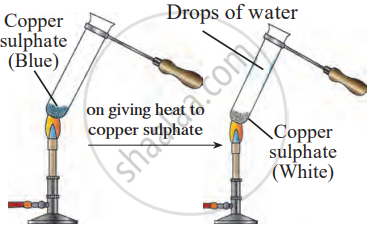1. Aim: To observe the water of crystallisation in alum and its effects on heating.
2. Requirements
- Apparatus: evaporating dish, Bunsen burner, tripod stand, wire gauze.
- Chemical: Alum.
3. Procedure
- Place a small piece of alum in an evaporating dish.
- Set the dish on a tripod stand over a wire gauze.
- Heat the dish gently using a Bunsen burner.
- Observe the changes in the alum during and after heating.
4. Observations: On heating, the alum stone loses its crystalline structure. Water droplets appear, indicating the release of water of crystallization. The alum becomes puffed and loses its solid, crystalline form, turning into a white, amorphous mass.
5. Conclusion: Alum contains water of crystallisation, which is an integral part of its crystalline structure. On heating, this water is released, causing the crystalline structure to break down, resulting in puffed alum. This shows that crystalline substances like alum contain water of crystallisation, which is lost upon heating, altering their physical properties.

